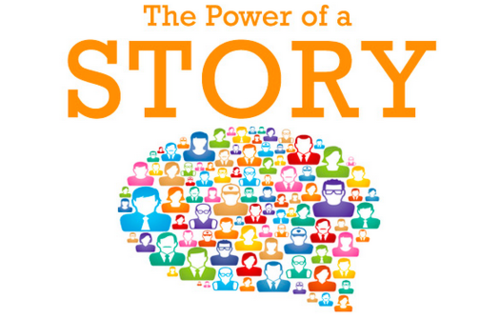What’s the return on your brand story?

What’s the ROI on your business card? How about the sign on the front of your store or office? What about your website? You’ve probably spent money — maybe even a good deal of money — on those marketing tools and perhaps many others. And you do it because you know it’s necessary, not because there’s strong measurable ROI from each of them.
Telling your brand story is the same investment, and should come from the same gut, decision-making philosophy. But it doesn’t have to be a gut decision.
You actually can measure the ROI associated with your brand story; not the story itself, but what it is you do to amplify and expose that brand story. The tools available these days to spread your story have deep analytics that tell us who is seeing your story and, more importantly, who is sharing your story. Those same tools allow you to target your story to the most perfect prospects for your product or service.
A recent post on LinkedIn Pulse outlined the benefits of how social media can get your brand story in exactly the right news feeds:
The real power in modern marketing channels such as Facebook, LinkedIn and so on is their targeted nature. You could run an ad online with Yellow Pages for over $1,000 a year and someone might see your ad or you could run a Facebook ad that only costs you 24 cents when someone clicks on it, which means they did see your ad and liked it enough to click on it!
That level of targeting is something that hasn’t been available before. It’s only been on the landscape for about a decade. And even the best marketers haven’t completely warmed up to it yet. But it’s there, and available to be exploited.
Provided you have the next steps planned out (that is, where they end up when they click on your ad) you can generate a much better response from “clickees” than with passive, listing advertising. Combine that with the fact that Facebook ads only get “served” to people you select through targeting (certain age group, interests, gender, location and more) and your potential return on investment becomes much higher than the older style listing ads.
With that level of targeting, and the reporting that comes with it, you can get a really strong handle on the ROI of your brand story reaching the most important prospects for your business. It was nearly impossible to get anything close to that feedback on traditional advertising before the social sharing age started to blossom some 10 years ago.
At Woden, our experience dates to back when social sharing didn’t exist. The most nerve-wracking client complaint we heard from back in the day was when a business decided that a particular marketing channel (a specific newspaper or billboard) didn’t work because the business didn’t get “any response” from the ad. It often didn’t occur to them that the problem had nothing to do with the channel, and had everything to do with the message.
Our quick retort was that if we replaced their creative on the billboard in question with “Call this number and get a free Porsche 911!” do they suppose they’d get more calls. Their answer was always, “yes”. So we would explain that getting a message that was more compelling than what they were using currently was the real opportunity — not necessarily finding a new channel.
We know that social media delivers business. Billions and billions of dollars worth of advertising knows that social media delivers business. For that matter, newspapers and billboards deliver business as well — as long as you’re telling a brand story that connects emotionally with your prospects and prompts them to action. That’s right: There needs to be emotion, and not just keywords or algorithm-happy phrases, in the story you put out there.
Danielle Small, who despises the term “marketing ninja”, said it well on Medium:
Content creators, especially, forget that they’re producing content, not for algorithms and rankings, but for actual human eyes. And you can tell that these ninjas and gurus need to be stopped because of all the mediocre content companies are producing. There’s little craft, voice or personality and there’s an overabundance of regurgitated keyword-rich conforming crap.
Get your brand story right. Focus on the finesse and the emotion. Spread that story to the right prospects using the right tools. Measure and adjust. It isn’t rocket science. It’s a little bit art, a little bit science, and a lot of commitment to consistency. As Danielle Small notes:
Your business doesn’t need a guru. It needs a person who will sit down and help your company grow. It doesn’t need flashy jargon and shallow ideas, but authenticity and substance. And that requires someone at the helm who possesses quality ideas, solid skills, and understands the craft of storytelling.
Woden helps businesses develop and articulate their unique story — what it is that makes them valuable. We then help broadcast that story in a way that gets attention and interest in today’s social-sharing culture, helping get the awareness and understanding that leads to authentic sales and better business. If you’d like help with your story, why not give us a call at 844-GO-WODEN or reach out at connect@wodenworks.com. Or visit our advertising agency Web site.


